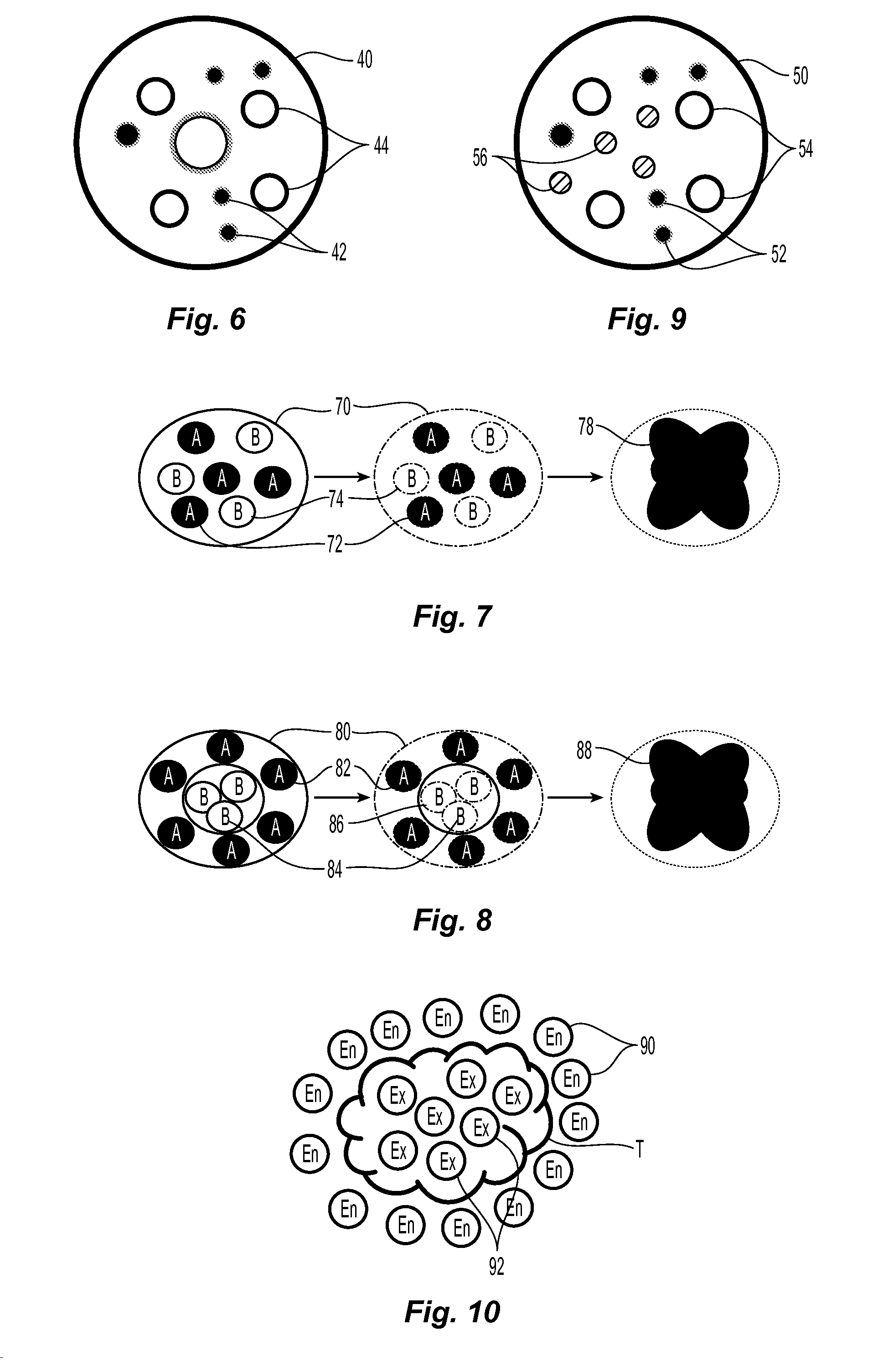Resorbable Oxidized Cellulose Embolization Microspheres
- Summary
- Abstract
- Description
- Claims
- Application Information
AI Technical Summary
Benefits of technology
Problems solved by technology
Method used
Image
Examples
example 1
[0243]This Example describes dissolution of oxidized cellulose having a degree of oxidation of 0.6 in a solution including 1% by weight of LiCl in N-methyl-2-pyrrolidinone (NMP).
[0244]A 100 mL three-neck round-bottom flask was used as a reactor vessel and was fitted with a gas inlet, a mechanical stirrer, and a gas outlet, which was then connected to a flow rate monitor. The flask was purged with argon for about 5 minutes at a rate of approximately 0.4 liter per minute (L / min), which was measured as approximately 5 bubbles per second by the flow rate monitor.
[0245]About 20 mL of anhydrous NMP was pipetted into the flask, which was then again purged with argon. Argon flow was adjusted to a rate of approximately 0.2 L / min or from about 2 bubbles per second to about 3 bubbles per second, as observed on the flow rate monitor.
[0246]A helium line was attached to the flask and the argon flow was stopped. The helium line was inserted into the reactor and submerged below the liquid level, an...
example 2
[0251]This Example describes dissolution of oxidized cellulose having a degree of oxidation of 0.6 in a solution including 1% by weight of LiCl in NMP under ambient atmosphere.
[0252]The same process was followed as set forth in Example 1 above, except the dissolution was carried out under ambient atmosphere. Oxidized cellulose was observed to have undergone complete dissolution.
example 3
[0253]This Example describes dissolution of oxidized cellulose having a degree of oxidation of 0.6 in a solution including 1% by weight of LiCl in NMP under ambient atmosphere without helium sparging
[0254]The same process was followed as set forth in Example 1 above, except the dissolution was carried out under ambient atmosphere and without helium sparging. Oxidized cellulose was observed to have undergone complete dissolution.
[0255]Molecular weight was determined for the dissolved oxidized cellulose of Examples 1-3 as summarized in Table 1 below.
TABLE 1ExampleMn (g / mol)12.7 × 10{circumflex over ( )}521.4 × 10{circumflex over ( )}531.8 × 10{circumflex over ( )}5
[0256]As illustrated in Table 1, dissolved oxidized cellulose of Example 1 had the highest molecular weight, whereas the dissolved oxidized cellulose of Examples 2 and 3 had a much lower molecular weight. Without being bound by any particular theory, it is believed that conducting dissolution under ambient atmosphere degrade...
PUM
| Property | Measurement | Unit |
|---|---|---|
| Time | aaaaa | aaaaa |
| Percent by mass | aaaaa | aaaaa |
| Percent by mass | aaaaa | aaaaa |
Abstract
Description
Claims
Application Information
 Login to View More
Login to View More - R&D
- Intellectual Property
- Life Sciences
- Materials
- Tech Scout
- Unparalleled Data Quality
- Higher Quality Content
- 60% Fewer Hallucinations
Browse by: Latest US Patents, China's latest patents, Technical Efficacy Thesaurus, Application Domain, Technology Topic, Popular Technical Reports.
© 2025 PatSnap. All rights reserved.Legal|Privacy policy|Modern Slavery Act Transparency Statement|Sitemap|About US| Contact US: help@patsnap.com



